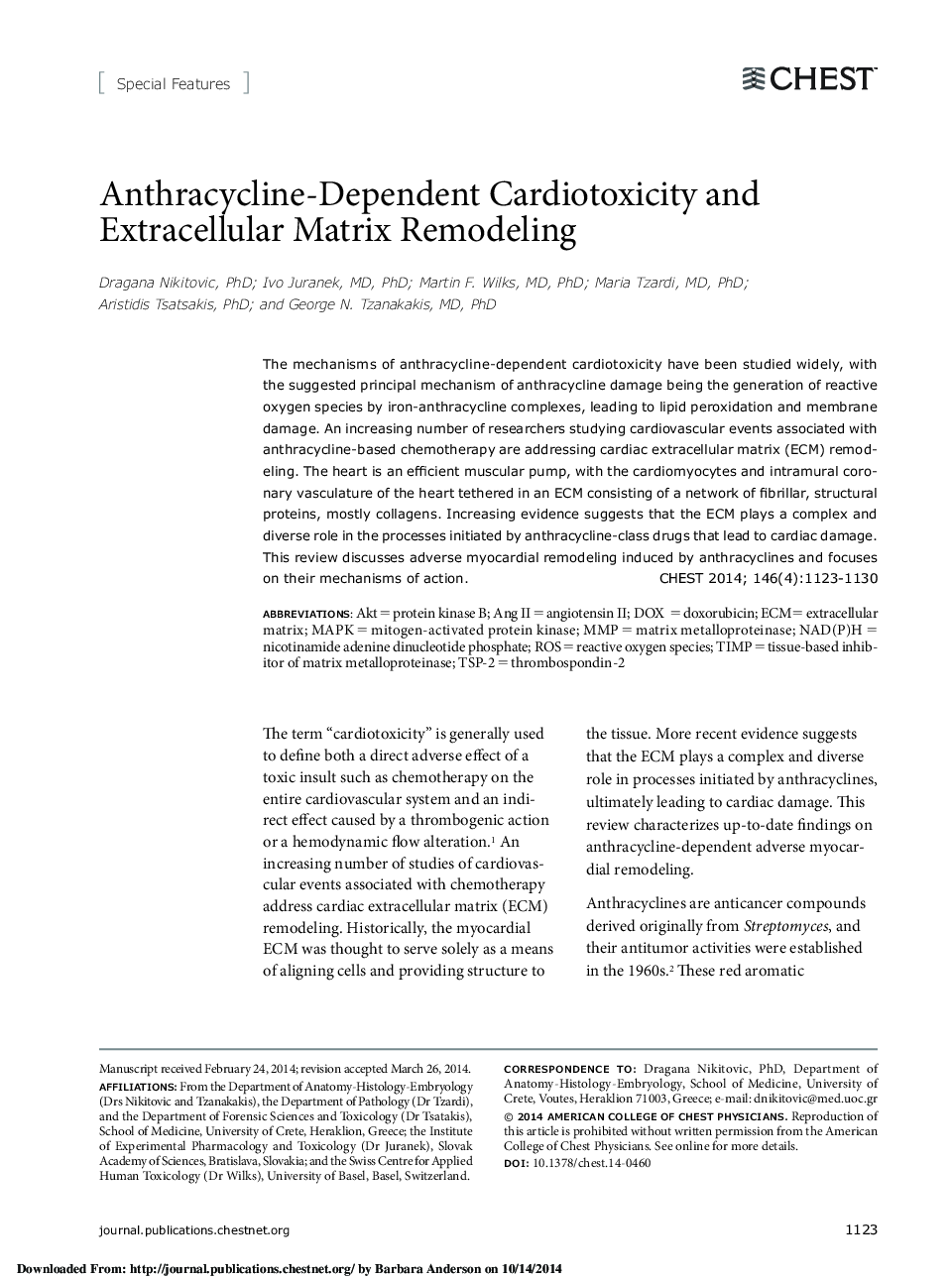| Article ID | Journal | Published Year | Pages | File Type |
|---|---|---|---|---|
| 5954613 | Chest | 2014 | 8 Pages |
Abstract
The mechanisms of anthracycline-dependent cardiotoxicity have been studied widely, with the suggested principal mechanism of anthracycline damage being the generation of reactive oxygen species by iron-anthracycline complexes, leading to lipid peroxidation and membrane damage. An increasing number of researchers studying cardiovascular events associated with anthracycline-based chemotherapy are addressing cardiac extracellular matrix (ECM) remodeling. The heart is an efficient muscular pump, with the cardiomyocytes and intramural coronary vasculature of the heart tethered in an ECM consisting of a network of fibrillar, structural proteins, mostly collagens. Increasing evidence suggests that the ECM plays a complex and diverse role in the processes initiated by anthracycline-class drugs that lead to cardiac damage. This review discusses adverse myocardial remodeling induced by anthracyclines and focuses on their mechanisms of action.
Keywords
Related Topics
Health Sciences
Medicine and Dentistry
Cardiology and Cardiovascular Medicine
Authors
Dragana PhD, Ivo MD, PhD, Martin F. MD, PhD, Maria MD, PhD, Aristidis PhD, George N. MD, PhD,
